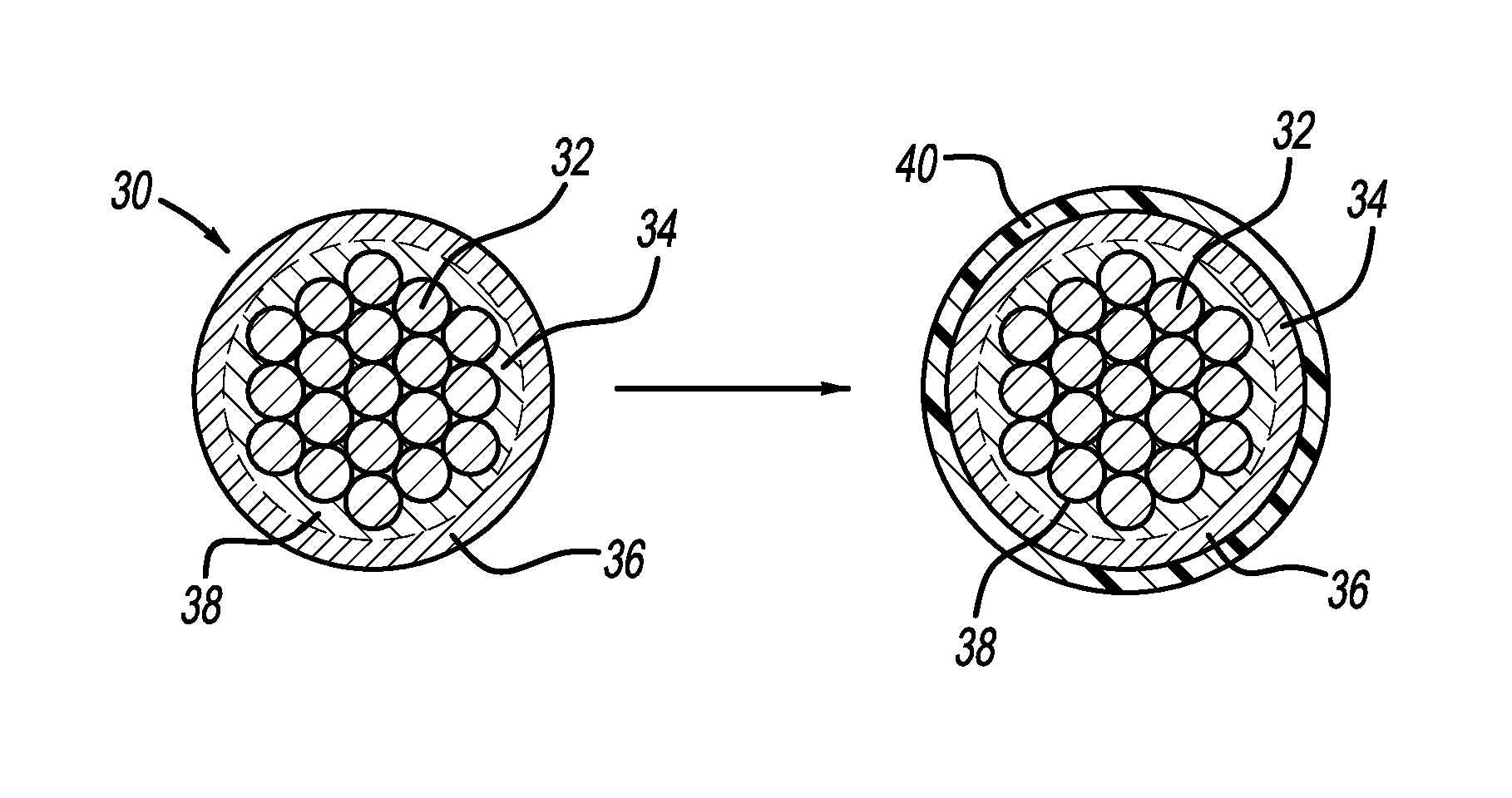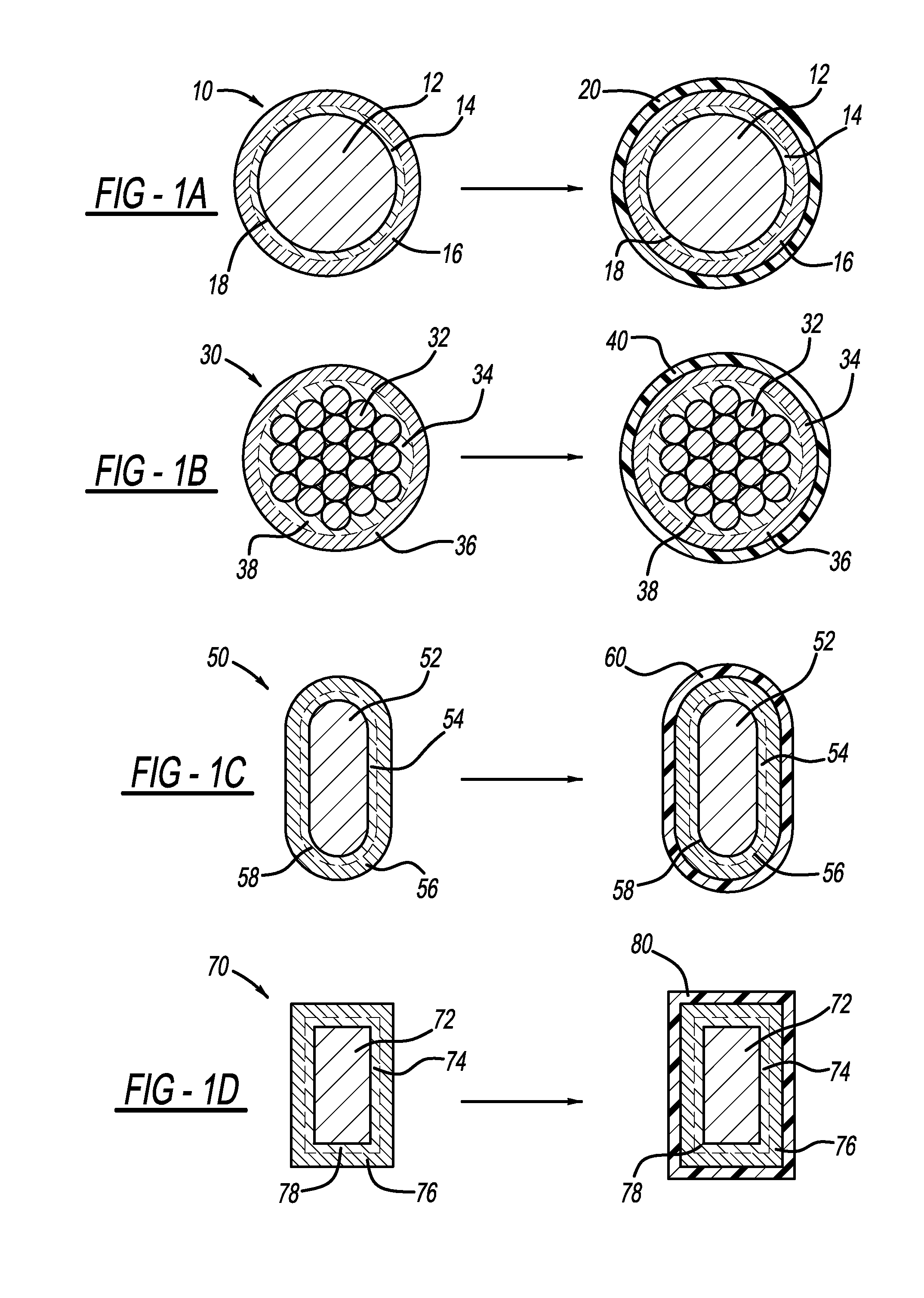Polymeric overcoated anodized wire
an anodized wire, polymer technology, applied in the direction of power cables, cables, insulation conductors/cables, etc., can solve the problems of unsatisfactory electrical efficiency, unsatisfactory anodization of this material, and ineffective dissipation of ohmic or resistance heating, etc., to achieve cost-effective production and operation, superior characteristics of filling micro cracks, and superior utility
- Summary
- Abstract
- Description
- Claims
- Application Information
AI Technical Summary
Benefits of technology
Problems solved by technology
Method used
Image
Examples
Embodiment Construction
[0017]In the following figures, the same reference numerals will be used to refer to the same components. In the following description, various operating parameters and components are described for different constructed embodiments. These specific parameters and components are included as examples and are not meant to be limiting.
[0018]With respect to FIGS. 1A-1D, sectional views of wires and related electrical composite conductors illustrated before and after being overcoated with a thin layer of high-purity aluminum according to the disclosed invention are illustrated. The wires and related conductors are preferably although not necessarily formed according to the methods and materials set forth in U.S. Pat. No. 7,572,980 and incorporated by reference in its entirety herein. The '980 patent is assigned to the same assignee to which the disclosed invention is assigned.
[0019]With particular reference to FIG. 1A, a sectional view of a composite conductor, generally illustrated as 10,...
PUM
| Property | Measurement | Unit |
|---|---|---|
| thickness | aaaaa | aaaaa |
| thickness | aaaaa | aaaaa |
| electric conductor | aaaaa | aaaaa |
Abstract
Description
Claims
Application Information
 Login to View More
Login to View More - R&D
- Intellectual Property
- Life Sciences
- Materials
- Tech Scout
- Unparalleled Data Quality
- Higher Quality Content
- 60% Fewer Hallucinations
Browse by: Latest US Patents, China's latest patents, Technical Efficacy Thesaurus, Application Domain, Technology Topic, Popular Technical Reports.
© 2025 PatSnap. All rights reserved.Legal|Privacy policy|Modern Slavery Act Transparency Statement|Sitemap|About US| Contact US: help@patsnap.com



